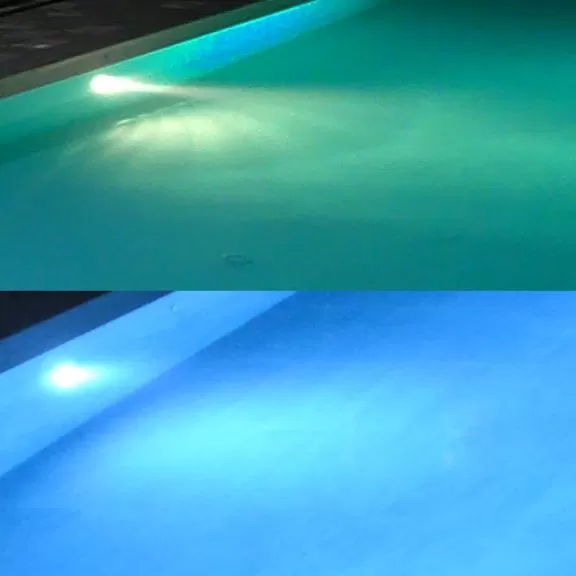
Limitations of a traditional lighting system
It is impossible to forget the characteristic ‘yellow cone’ of the PAR56 lamp, which for years we have seen in swimming pools all over the world as the only reference in the field of pool interior lighting. The typical cone shape of the light beam resulted from the characteristic narrow exit of about 30 degrees, which created the well-known lateral shadow zones. For smaller or shallow areas, 50W dichroic lamps with a light output of around 35-40 degrees were used.
Constantly evolving lighting
Today, the way of building pools has changed and with it the way of lighting them. Increasingly, lighting is the factor that has the greatest impact on the aesthetic appearance of the pool in the absence of natural light. With the arrival of LEDs, there has been a real revolution, both in terms of energy and aesthetics: higher yields with lower consumption, greater homogeneity of light and the possibility of lighting pools in different colours.